Why does Edwardian architecture continue to captivate us? The answer lies in its seamless blend of elegance and innovation. Emerging at the turn of the 20th century, Edwardian architecture reflected a society in transition. Moving away from the ornate and heavily decorated Victorian style, this new approach embraced simplicity, light, and air. Edwardian buildings are often characterized by their refined lines, restrained decoration, and harmonious proportions, all of which contribute to their timeless appeal. This article will explore the grace of Edwardian architecture through five iconic structures that not only define the era but also continue to inspire modern design.
Understanding Edwardian Architecture: What Defines Edwardian Architecture?
Edwardian architecture, spanning from 1901 to 1910 during the reign of King Edward VII, marked a significant departure from the Victorian style that preceded it. This period favored a more relaxed, less formal approach to design, focusing on practicality and comfort without sacrificing beauty. Key features of Edwardian architecture include:
- Simplified Decoration: Unlike the elaborate ornamentation of the Victorian era, Edwardian buildings featured more restrained detailing. Decorative elements, such as plasterwork, were often inspired by classical motifs but executed with a lighter touch.
- Emphasis on Light and Space: Large windows, high ceilings, and spacious rooms are hallmarks of Edwardian homes, reflecting the period’s preference for airy, well-lit interiors.
- Use of Natural Materials: Timber, stone, and brick were commonly used, with a preference for natural colors and textures that added to the overall aesthetic of subtle elegance.
- Asymmetry and Variety: Edwardian buildings often exhibit asymmetrical facades and a variety of rooflines, giving each structure a unique character while still adhering to the overall design principles of the period.
These defining characteristics set the stage for the iconic structures we will explore, each representing the best of Edwardian architecture.
Historical Context: The Emergence of Edwardian Architecture in the Early 20th Century
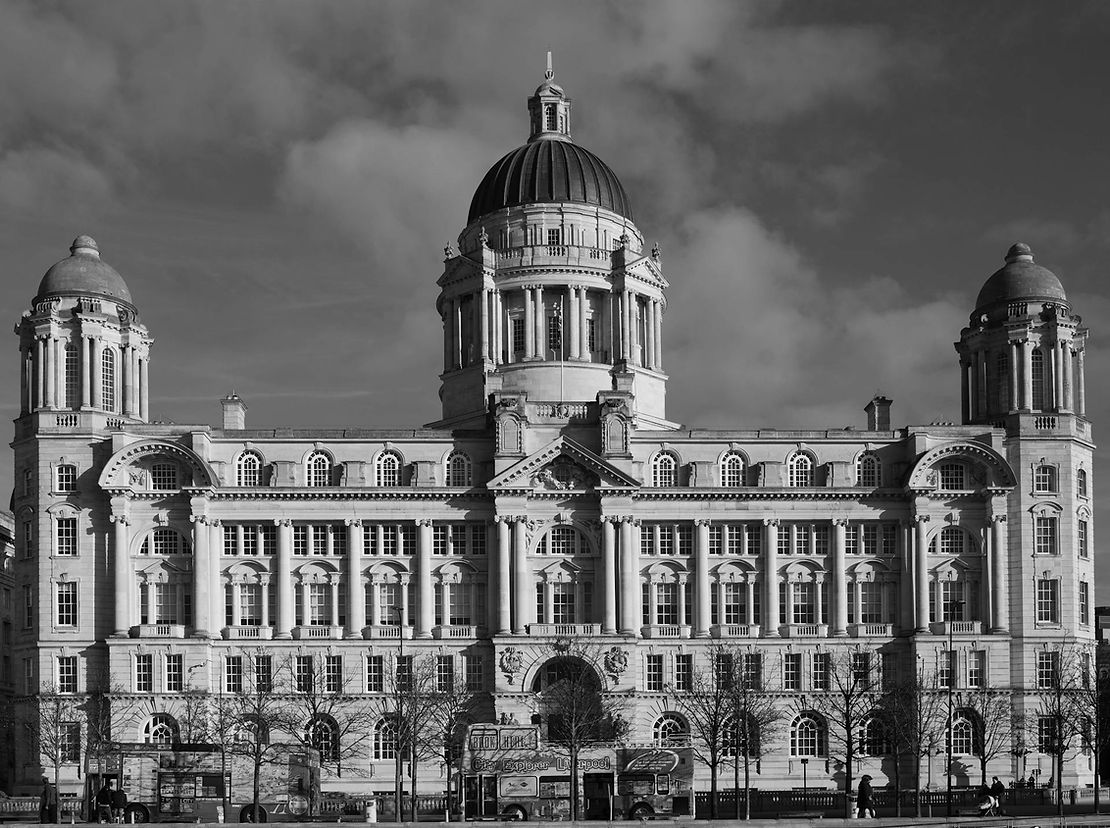
The Edwardian era was a time of change and modernization, reflected in the architecture of the period. Following the lengthy and highly decorative Victorian era, Edwardian architecture responded to the needs of a more modern society. The Industrial Revolution had brought about significant technological advancements, and the influence of the Arts and Crafts movement encouraged a return to craftsmanship and quality materials.
Social changes also played a role in shaping Edwardian architecture. The rising middle class sought homes that were comfortable, stylish, and less rigid than the grand Victorian houses. This demand led to the construction of suburban homes that were spacious yet simple, with an emphasis on functionality and understated elegance. Public buildings and commercial structures, meanwhile, adopted a more monumental style, combining the grandeur of earlier eras with the practicality of modern design.
As we delve into the specific structures, we’ll see how these historical influences manifested in some of the most iconic examples of Edwardian architecture.
Design Characteristics: Key Features of Edwardian Architecture

Edwardian architecture stands out for its distinct characteristics, which have helped it endure as a beloved style. Here’s a closer look at some of the key features:
- Ornamental Restraint: While not devoid of decoration, Edwardian architecture uses ornamentation more sparingly. Common decorative elements include simple cornices, pilasters, and classical motifs like swags and garlands.
- Emphasis on Verticality: Buildings often feature tall, narrow windows and steeply pitched roofs, contributing to an overall sense of height and grace.
- Mixed Materials: It’s not unusual to find a single Edwardian building constructed from a mix of materials, such as red brick with stone dressings or half-timbering combined with brick or stucco. This variety in texture and color adds depth and interest to the facades.
- Bay Windows and Porches: Bay windows are a prominent feature of Edwardian homes, allowing for more light and creating a sense of space. Porches, often supported by slender columns, provide a welcoming entrance.
These features, among others, contribute to the unique character of Edwardian buildings, making them stand out as elegant and sophisticated examples of early 20th-century design.
1. The Ritz Hotel, London: A Symbol of Edwardian Luxury
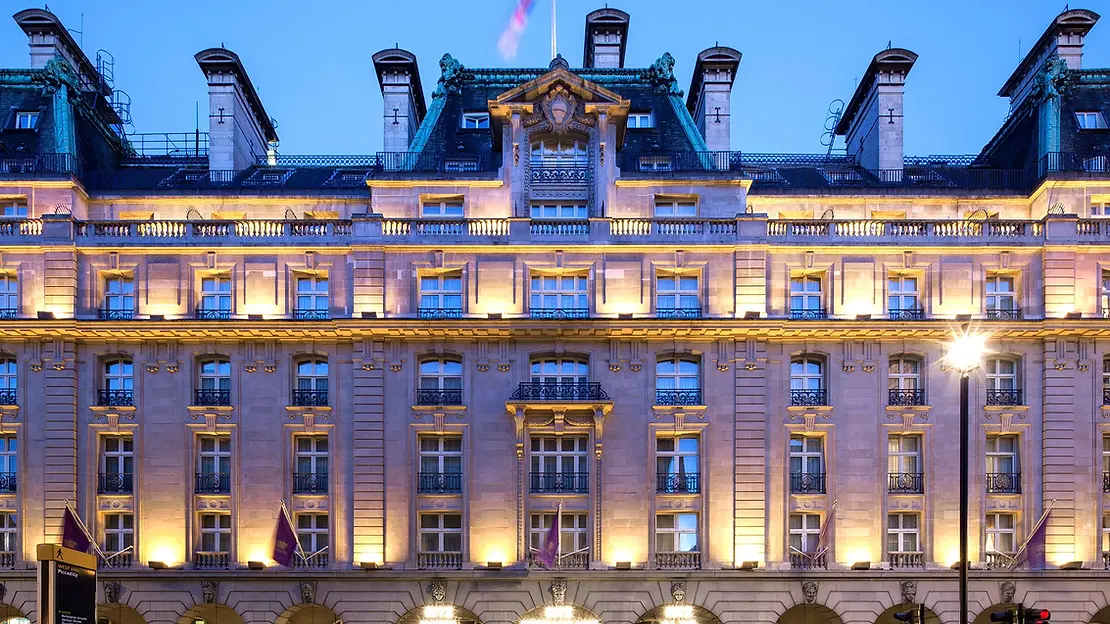
The Ritz Hotel in London is perhaps the most iconic example of Edwardian luxury. Opened in 1906, the Ritz was designed by the renowned architect Charles Mewès, who infused the building with a blend of neoclassical and Edwardian styles. The hotel’s exterior is characterized by its grand facade, featuring large windows, classical columns, and a meticulously designed roofline that exemplifies the elegance of the era.
Inside, the Ritz continues to impress with its opulent interiors, which include lavish chandeliers, ornate plasterwork, and richly upholstered furniture. The hotel was designed to cater to the elite of Edwardian society, and it quickly became a symbol of wealth and sophistication. Today, the Ritz remains a testament to the enduring appeal of Edwardian architecture, attracting visitors from around the world who come to experience its timeless luxury.
2. Australia House, London: Edwardian Grandeur on Display
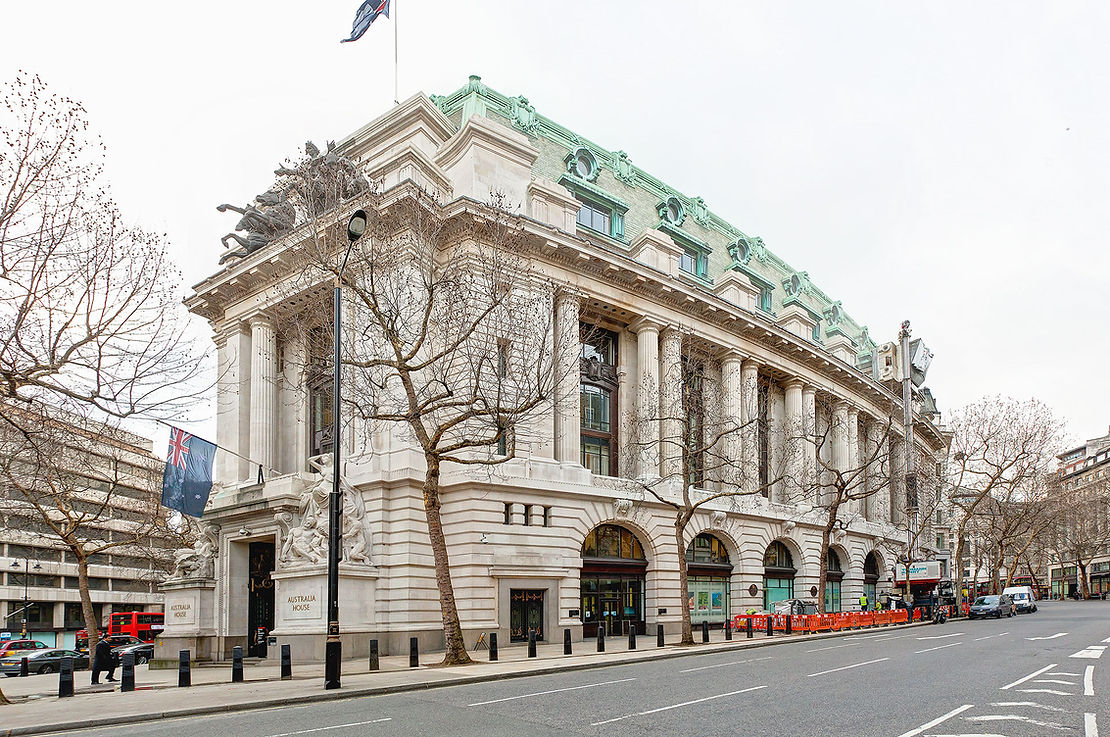
Australia House, located on the Strand in London, is another prime example of Edwardian grandeur. Completed in 1918, this building was designed by the British architects Marshall and Veall, with input from the Australian architect Alexander Marshall Mackenzie. The structure serves as the Australian High Commission and showcases the grandiose style typical of Edwardian public buildings.
The exterior of Australia House is imposing, with its large columns, intricate stone carvings, and a majestic entrance that speaks to the power and prestige of the Australian government during the Edwardian period. Inside, the building continues to impress with its grand staircases, marble floors, and extensive use of Australian timbers, which were shipped to London specifically for this project.
Australia House not only represents the architectural trends of the Edwardian era but also serves as a symbol of the strong ties between Britain and Australia at the time.
3. Admiralty Arch, London: A Gateway to Edwardian Elegance
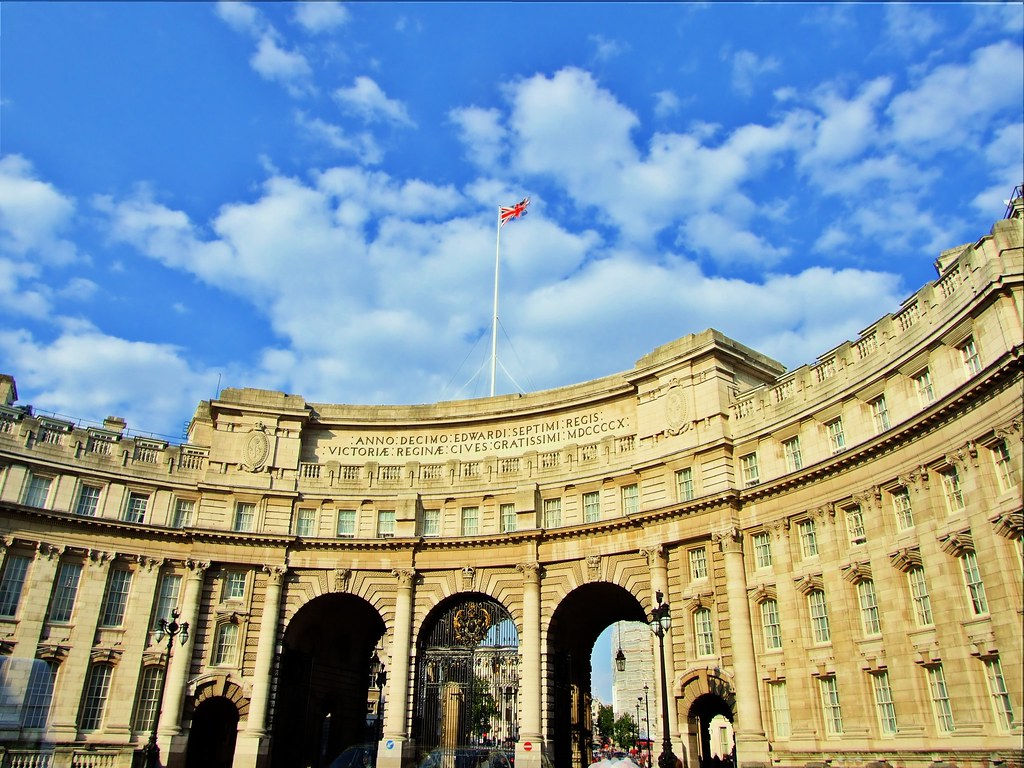
Admiralty Arch is another iconic structure from the Edwardian era, designed by Sir Aston Webb and completed in 1912. Situated at the end of The Mall, leading to Buckingham Palace, Admiralty Arch serves as both a ceremonial gateway and an office building for the British government.
The design of Admiralty Arch reflects the grandeur and formality associated with Edwardian architecture. The building features a symmetrical facade, grand archways, and a mixture of classical and baroque elements that convey a sense of power and authority. The central arch, through which processions pass, is flanked by two smaller arches, each adorned with sculptures and inscriptions that add to the building’s historical significance.
Today, Admiralty Arch stands as a proud example of Edwardian architecture’s ability to combine functionality with monumental beauty.
4. The Victoria and Albert Museum Extension: A Marriage of Art and Architecture
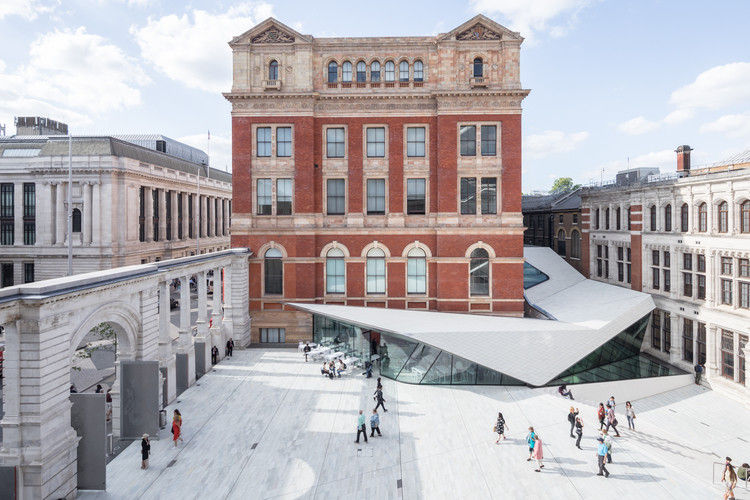
The Victoria and Albert Museum in London, already a celebrated institution, gained an important extension during the Edwardian period. The new wing, completed in 1909 and designed by Aston Webb, is a fine example of how Edwardian architecture embraced both tradition and innovation.
The extension features a grand entrance with a large, arched window that allows natural light to flood the interior. The use of Portland stone on the facade ties the building to other significant structures in London, while the interior spaces are designed to showcase art and artifacts in a manner befitting their importance.
This project illustrates the Edwardian architects’ respect for the past while also pushing the boundaries of design to create spaces that were both functional and inspiring.
5. White City Stadium, London: The Forgotten Gem of Edwardian Architecture
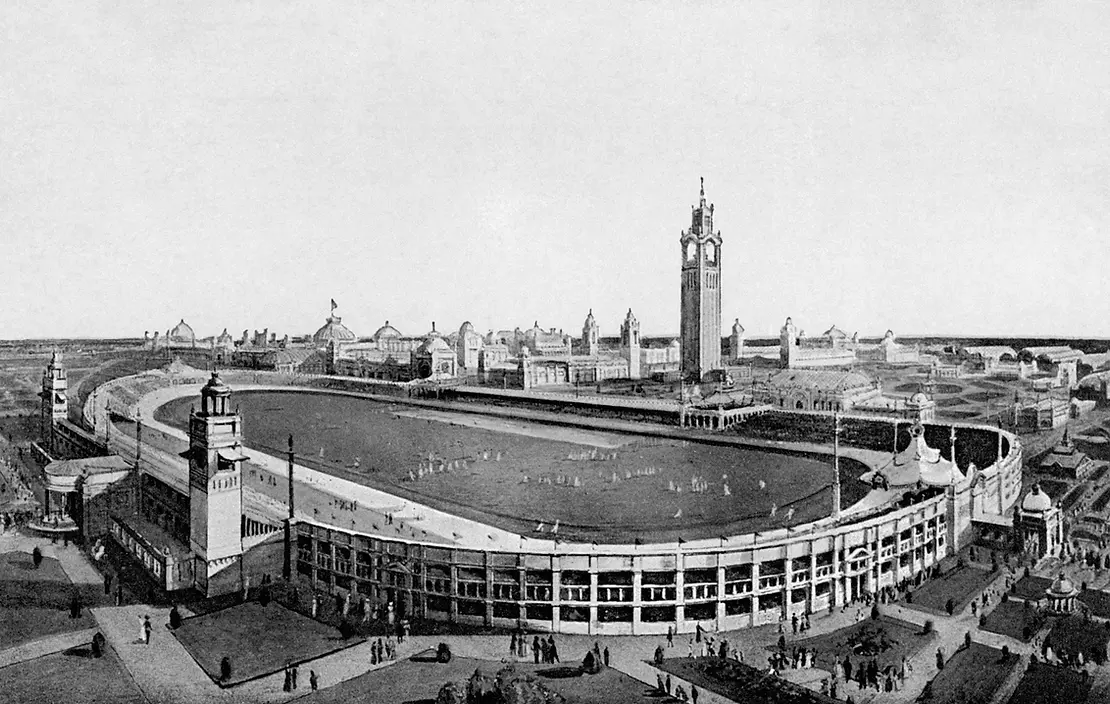
White City Stadium, built for the 1908 Summer Olympics in London, is a lesser-known but significant example of Edwardian architecture. Designed by J.J. Webster and completed in just ten months, the stadium was a marvel of engineering and design for its time.
The stadium’s design included a seating capacity of 68,000, making it one of the largest in the world at the time. The use of steel and concrete in its construction was innovative, and the stadium featured a unique layout with a running track, cycling track, and swimming pool, all integrated into the design.
Although the stadium was demolished in 1985, its influence can still be seen in modern sports architecture. White City Stadium remains a testament to the ingenuity and ambition of Edwardian designers.
Comparing Edwardian and Victorian Architecture: Key Differences Between Edwardian and Victorian Styles

While Edwardian architecture evolved from its Victorian predecessor, several key differences set the two styles apart. Victorian architecture, characterized by its ornate decoration and elaborate detailing, often feels heavier and more formal than the lighter, more restrained Edwardian style.
- Ornamentation: Victorian buildings are often richly adorned with decorative elements, including intricate woodwork, stained glass, and patterned brickwork. In contrast, Edwardian architecture uses simpler, more understated decoration, focusing on classical motifs and clean lines.
- Space and Light: Victorian homes, with their smaller windows and darker interiors, can feel more enclosed compared to the open, airy spaces of Edwardian homes, which prioritize light and spaciousness.
- Materials: While both styles use a variety of materials, Edwardian buildings often feature a more eclectic mix, with a preference for natural textures and colors that contribute to the style’s overall sense of elegance.
Understanding these differences helps to appreciate the unique characteristics of Edwardian architecture and its place in the broader history of architectural design.
Edwardian Interiors: Interior Design Trends in Edwardian Homes

The interiors of Edwardian homes reflect the era’s focus on comfort, practicality, and understated elegance. Common features of Edwardian interiors include:
- Color Palettes: Soft, muted colors such as pastels, creams, and light greens were popular, creating a calming and welcoming atmosphere.
- Furniture: Edwardian furniture tended to be lighter and more comfortable than the heavy, ornate pieces of the Victorian era. Wicker, bamboo, and upholstered furniture were commonly used in living spaces.
- Wallpaper and Fabrics: Floral patterns, often inspired by nature, were a staple of Edwardian interiors. Wallpaper was commonly used, with designs featuring birds, flowers, and other natural motifs.
- Fireplaces: The fireplace remained a focal point in Edwardian homes, often adorned with simple, classical mantels and decorative tiles.
These elements combined to create interiors that were both stylish and functional, reflecting the era’s shift towards a more relaxed and comfortable lifestyle.
Gardens and Landscaping: The Role of Gardens in Edwardian Architecture
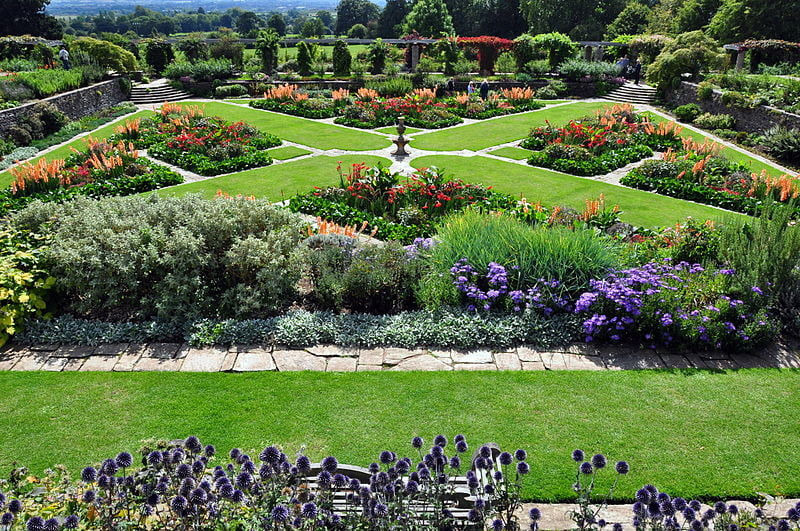
Gardens played an important role in Edwardian architecture, reflecting the era’s emphasis on harmony between indoor and outdoor spaces. Edwardian gardens were designed to be enjoyed, often featuring:
- Formal Layouts: Symmetrical designs with well-defined paths, borders, and flowerbeds were common in Edwardian gardens, creating a sense of order and tranquility.
- Lawns and Borders: Expansive lawns, edged with colorful flower borders, were a hallmark of Edwardian gardens. These spaces provided a setting for outdoor activities and social gatherings.
- Ornamental Features: Garden elements such as pergolas, sundials, and fountains were popular, adding to the aesthetic appeal of the landscape.
- Vegetable and Herb Gardens: Many Edwardian homes included functional garden spaces for growing vegetables, herbs, and fruits, reflecting the era’s interest in self-sufficiency and healthy living.
The attention to detail in garden design complemented the architecture of Edwardian homes, creating a seamless connection between the built environment and the natural world.
The Revival of Edwardian Architecture: Recent Projects Inspired by Edwardian Design
In recent years, there has been a resurgence of interest in Edwardian architecture, with many new projects drawing inspiration from the elegance and simplicity of the era. Architects and designers have looked to Edwardian principles to create spaces that combine traditional aesthetics with modern functionality.
- Residential Developments: New housing developments often incorporate Edwardian-inspired facades, with features such as bay windows, pitched roofs, and classical detailing, providing a sense of timeless charm.
- Restorations and Conversions: Many Edwardian buildings have been carefully restored or converted into modern apartments, preserving their historical character while updating interiors for contemporary living.
- Public and Commercial Spaces: The influence of Edwardian architecture can also be seen in public and commercial projects, where designers draw on the style’s emphasis on light, space, and proportion to create welcoming environments.
This revival underscores the enduring appeal of Edwardian architecture and its relevance in today’s architectural landscape.
Edwardian Architecture in Popular Culture: How Film and Literature Celebrate Edwardian Architecture
Edwardian architecture has been celebrated in film and literature, where its distinctive style often serves as a backdrop for stories set in the early 20th century. The period’s elegance and grace make it a popular choice for period dramas, historical novels, and other works that explore the social and cultural dynamics of the time.
- Film and Television: Many films and TV series, such as “Downton Abbey” and “The King’s Speech,” feature Edwardian settings, with grand homes and public buildings that capture the essence of the era.
- Literature: Edwardian architecture is often depicted in novels that explore themes of change and modernization, with the style serving as a symbol of the period’s social and cultural shifts.
- Art and Photography: The beauty of Edwardian architecture has also been captured in art and photography, where the buildings’ graceful lines and intricate details are celebrated as works of art in their own right.
This cultural presence has helped to keep the legacy of Edwardian architecture alive, ensuring that it continues to be appreciated by new generations.
Conclusion: The Enduring Legacy of Edwardian Architecture
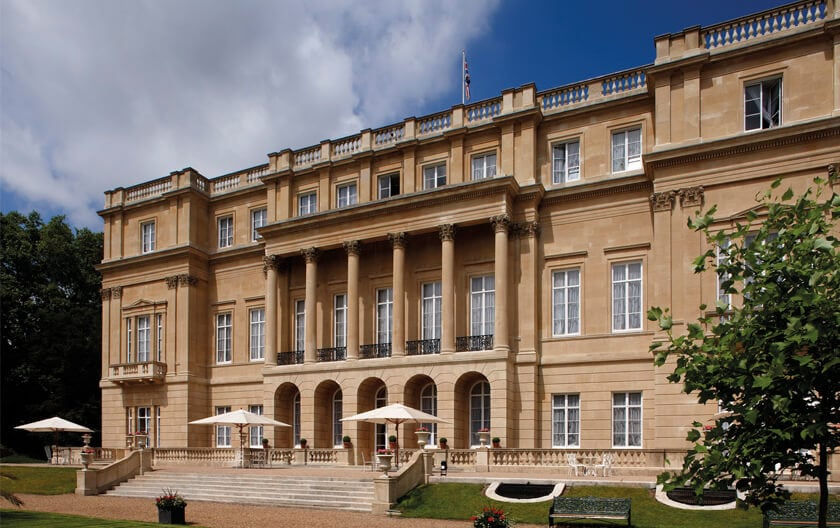
Edwardian architecture remains a cherished style, admired for its elegance, functionality, and timeless appeal. The five iconic structures explored in this article each represent the best of what the Edwardian era had to offer, from the luxurious Ritz Hotel to the grand public buildings that defined a nation. As we continue to draw inspiration from this period, Edwardian architecture stands as a reminder of an era that valued beauty, craftsmanship, and a harmonious relationship between the built environment and the natural world.
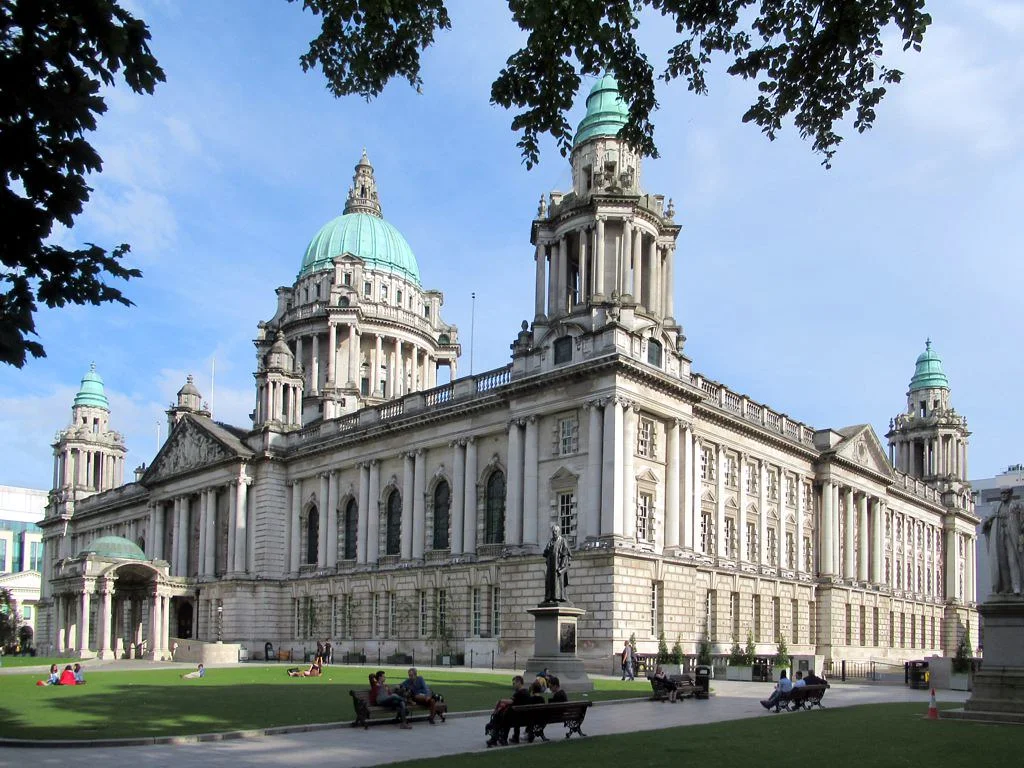
Recent Posts
15 Floor Plan Graphic Styles That Will Elevate Your Presentation Game
The Role of Shadows in Architectural Storytelling
When Furniture Becomes Architecture: Blurring the Line